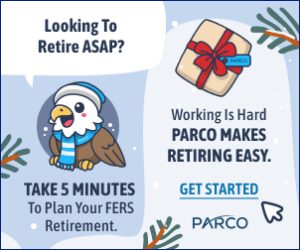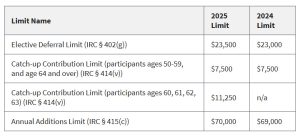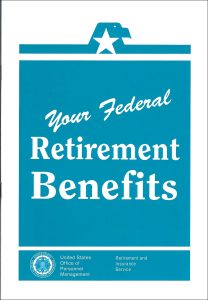Posted on Wednesday, 29th January 2025 by Dennis Damp
 Print This Post
Print This Post
According to OPM’s memo dated 1/28/2024, the President requires that employees return to in-person work. The Presidential directives issued this past week are intended to restore accountability for employees with policy-making authority, restore accountability for senior career executives, and reform the federal hiring process to focus on merit.

Agency heads will be the final arbiters for those eligible, determining which positions within their organizations are critical.
Should I Accept a Deferred Resignation?
There is much to consider, and with the limited time available, you must gather all the facts and fully understand the ramifications of your decision. OPM published the email notice on their site with an informative FAQ to review before replying.
I highly suggest reviewing the FAQ and then evaluating your financial situation and related benefits, such as whether you can take a deferred or immediate annuity. Sign up for the January 30th free Deferred Resignations seminar, starting at 7:00 pm (EST). Subsequent seminars on this subject will be announced on this site.
In the late 1990s, my agency received the Voluntary Early Retirement Authority (VERA) with a Voluntary Special Incentive Payment (VSIP) for specific occupations. I considered taking it, but after determining my dramatically reduced annuity, I decided it wasn’t a good fit, and in the end, my position was not included.
Individuals who resign through this program are generally not required to work during the deferred resignation period except in rare cases as determined by your agency.
Mass Confusion
Personally, agencies should have sent emails only to those they deemed eligible. OPM will be flooded with emails, and their staff is having difficulties providing services to retirees. Whenever I call OPM, I get a recording saying, “Call back later.”
Currently, it takes several weeks for them to reply to an email. I can only imagine the panic at OPM as they scramble to handle this influx and process the associated paperwork for those who accept the deferred resignation offer. They are currently having difficulties processing several thousand retirement applications each month.
This may not be an issue initially because the Executive Order will likely be challenged in the courts, and the time frame for implementation and offer could change dramatically.
Many positions would not be eligible for this program, including critical care medical specialists, air traffic controllers, technical and system specialists, certain automation specialists, law enforcement personnel, and critical IT positions.
Deferred Resignation Process
The program begins January 28 and is available to eligible federal employees until February 6. According to the memo, “If you resign under this program, you will retain all pay and benefits regardless of your daily workload and will be exempted from all applicable in-person work requirements until September 30, 2025 (or earlier if you choose to accelerate your resignation for any reason).”
If you wish to resign after reviewing the contents of the memo and FAQ, select “Reply” to this email. You must reply using your .gov or .mil government account. Replying from a private email address will not be accepted. Type “Resign” into the body of this reply email and Hit “Send.”
If you didn’t respond to the email and wish to accept the deferred resignation offer, you may do so by following these steps.
- Send an email to hr@opm.gov from your government account. Only an email from your .gov or .mil account will be accepted.
- Type the word “Resign” into the “Subject” line of the email. Hit “Send”.
You will receive an email confirming receipt with additional information on next steps. Given the volume of emails, this confirmation email may take up to 72 hours. You should retain the record of your resignation email.
Preparing for the Inevitable
I anticipated this mass exodus shortly after President Trump was elected. My early January article, “A Potential Federal Retirement Tsunami – The DOGE Impact,” outlines the downsizing options and retirement benefits available to all employees.
The article describes FERS, CSRS, and early retirement options and how the government implements VERA and VSIP authorizations within their agencies to reduce the impact on federal employees.
VERA and VSIP authority are often used to avoid Reduction in Force (RIF) action. The Deferred Resignation package would be far more generous since applicants would receive up to seven months of pay plus benefits through September 2025!
Sign up for a complimentary retirement planning session
and a FREE retirement planning report
Resources to Get You Started
There are many options to explore, and anyone that the DOGE may impact needs to thoroughly assess their situation, including a cost analysis for pre and post-retirement to see what you and yours will have to live on.
The following informative articles, guides, spreadsheets, and schedules will help you assess your personal situation:
- The Ultimate Retirement Planning Guide – Start Now!
- Deciding When to Retire – A 7-Step Guide
- The Best Date to Retire – Selecting your retirement date
- Retirement Cost Analysis
- Early Retirement – VERA and VSIP
- How to Avoid Retirement Processing Delays (UPDATE)
- The Obligations and Realities of Returning to In-person Work
Summary
Employees must evaluate their situation closely using the resources listed above and our Federal Employees Retirement Planning guide.
Leaving federal service may seem appealing at first. The only way to ensure it’s right for you and yours is to perform a thorough Retirement Cost Analysis and proceed with caution. One of the advantages of deferred resignation is that you will have eight months to explore other employment options and put away funds to keep you solvent once you leave. Plus, your benefits will continue to accrue until you leave federal service.
Another major advantage is that if you have 5 years of creditable service, you can take a deferred retirement at age 62. With 20 years of service, you can retire at age 60, and FERS employees can retire at their Minimum Retirement Age with as little as 10 years of creditable service.
You don’t have much time to make your choice, so use that time wisely and thoroughly evaluate your options.
If you change your mind after sending your resignation email, employees have the right to request rescission of their resignation at any time, and the employing agency will need to review such rescinding requests.
The program’s objective is to consolidate and/or reassign roles quickly and, in many cases, place employees on administrative leave, which would likely serve as a valid reason to deny recission requests.

Federal employees who are retiring soon and recent retirees with security clearances
can search thousands of high-paying defense and government contractor jobs.
Helpful Retirement Planning Tools
- Federal Employee’s Retirement Planning Guide
- Complimentary Retirement Planning Session
- TSP Guide
- Budget Work Sheet
- 2025 Federal Employees Leave Record
- Medicare Guide
- Social Security Guide
Disclaimer: The information provided may not cover all aspect of unique or special circumstances, federal regulations, medical procedures, investment, and benefit information are subject to change. To ensure the accuracy of this information, contact relevant parties for assistance including OPM’s retirement center.
Over time, various dynamic economic factors relied upon as a basis for this article may change. The information contained herein should not be considered investment advice and may not be suitable for your situation. This service is not affiliated with OPM or any federal entity. You should consult with a financial, medical or human resource professional where appropriate. Neither the publisher or author shall be liable for any loss or any other commercial damages, including but not limited to special, incidental, consequential, or other damages.
Tags: Deferred Resignations, Deferred Retirement, DOGE, Early Retirement, Federal Employee Deferred Resignations, FERS Retirement, VERA, VSIP
Posted in ANNUITIES / ELIGIBILITY, BENEFITS / INSURANCE, EMPLOYMENT OPTIONS, ESTATE PLANNING, FINANCE / TIP, RETIREMENT CONCERNS, SOCIAL SECURITY / MEDICARE, SURVIVOR INFORMATION
Comments (0)|  Print This Post
Print This Post









